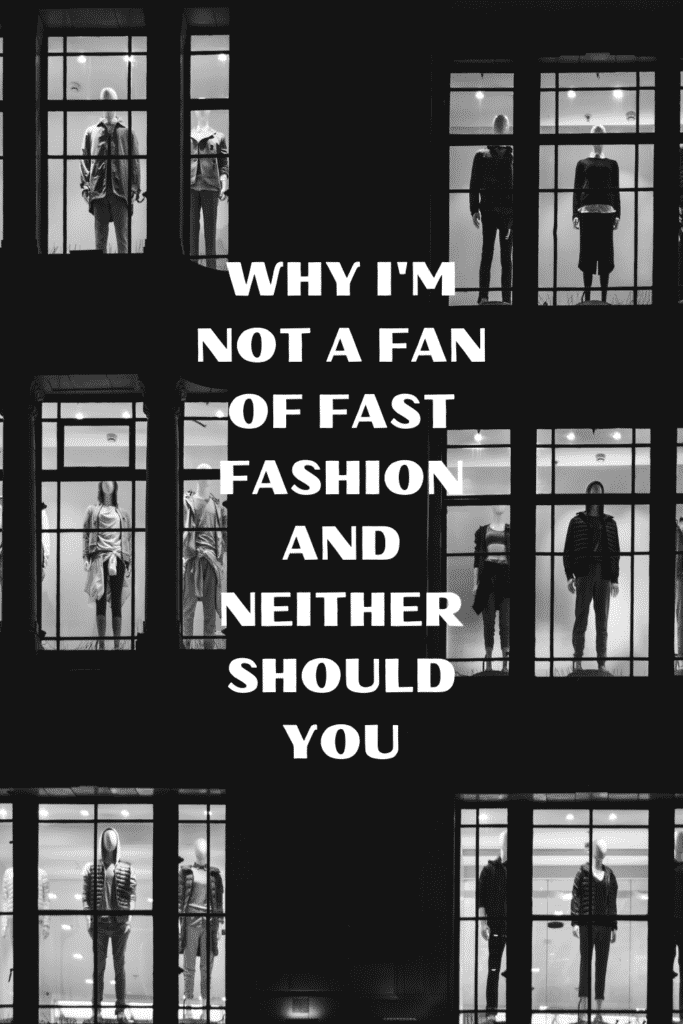We live in an ever-consuming world. When it comes to fashion, people always seem to have a way to keep up with the latest trends. We love everything chic; we love it when we’re first to showcase a hot fashion craze among our friends. Fashion brands, in return, would try to sustain this demand by mass producing and overstocking their stores. When their collections no longer suit the season, these brands are just as quick to dispose of them to make way for the new ones. That sums up the concept of fast fashion.

First, let’s discuss the quality.
Because it is designed to cater to the fast-changing fashion demands, the quality is not thoroughly outlined and developed, thus very prone to damage. And why is that so? Of course, for consumers to keep buying new ones. The only way for any brand to mass produce clothes in a relatively short period of time is to bank on cheap materials and critical labor situations where workers are forced to work strenuously to meet a certain quota. To put simply, fast fashion is just composed of new trends, but they are not necessarily timeless pieces.
Second, the need for accelerated labor.
To sustain the insatiable appetite for up-to-date trends, workers are forced to overwork with little pay. This is no secret in the fashion industry, and is something that many organizations have been trying to resolve for years. According to some reports, employers would sometimes impose a rule where lunch breaks are only possible once the workers are able to deliver urgent orders or pieces. Even bathroom and water breaks could be withheld because it ruins the staff’s momentum during work.
If this isn’t enough to change your mind, let us discuss child labor this time.
Because of the constant fashion demands, companies are very eager to find ever-cheaper labor sources – something that is FREELY available in many poor countries. Young girls in India and Bangladesh, for instance, were easily lured into the industry as they were falsely promised a safe work environment and under reasonable work conditions. The dream of earning decent wages never really happens. This is an appalling case of modern-day slavery.
Not only does this supply chain create low-quality products and promote abuse among its workers, it also produces a high amount of wastes as too much of every material is being used.
Ethically sourced and sustainable alternative to fast fashion.
Embracing an intentional lifestyle can be the first step to gradually replacing our obsession with fast fashion. Simplify your life and needs by reevaluating your style. We all have the tendency to purchase something just because it is currently hot; this time, try to make conscious decisions about everything you purchase. Ask yourself, do I really need this or am I just trying to ride on the trend? Buy something because you are in dire need of it, or when you can make use of it regularly.
Shop locally and do not shy away from pre-loved items. We should not be afraid of going through thrift stores as the possibilities in these places are truly endless. Some of these clothes may be ‘outdated’ but embracing vintage finds can be a way to practice our styling skills.
The simplest way to boycott fast fashion is to get off the trend train. You don’t always have to acquire what’s in and trendy, you have to acquire what offers utmost quality and comfort. A capsule wardrobe can be a good way to reflect on your personal style, too. We will become less susceptible to this as we embrace the habit of practicality.
